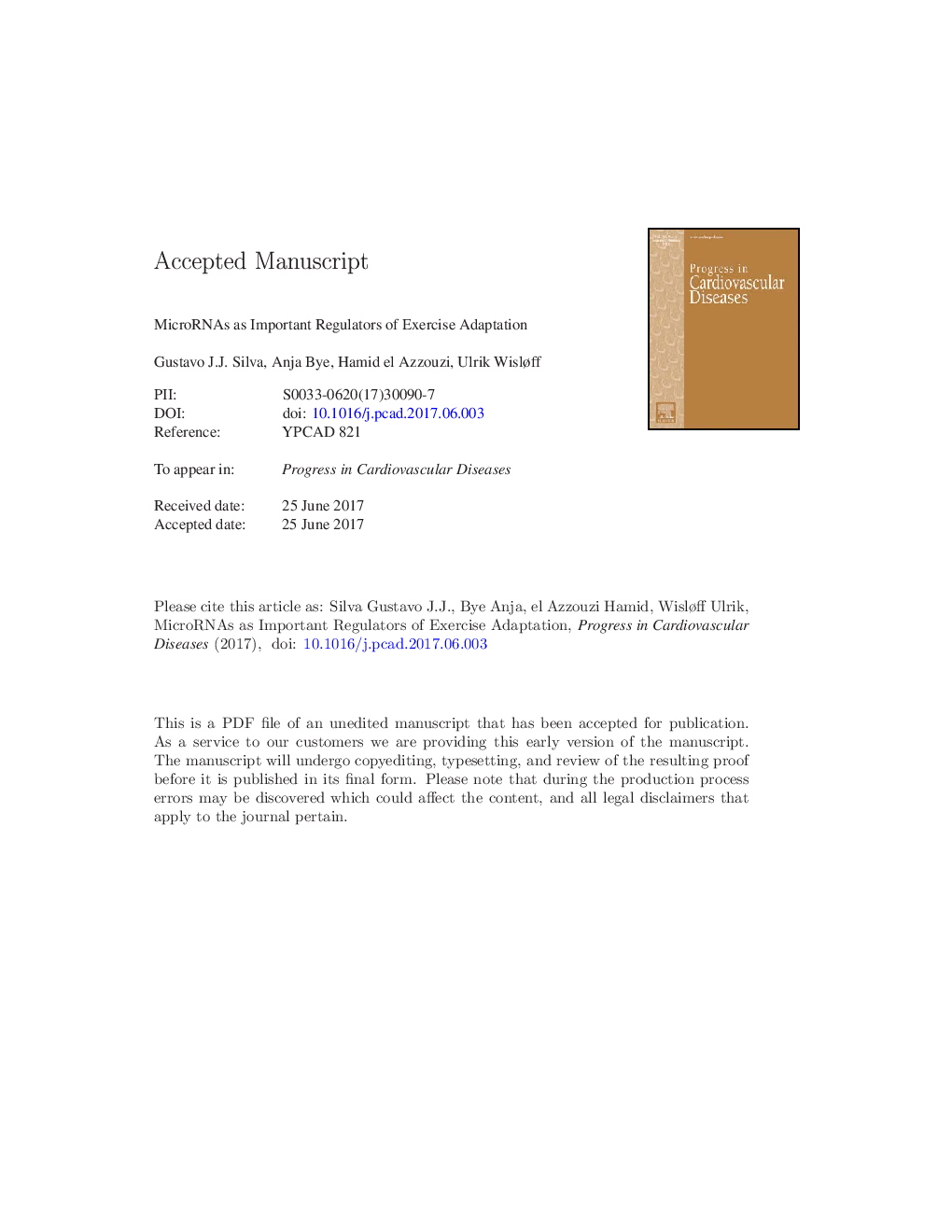| Article ID | Journal | Published Year | Pages | File Type |
|---|---|---|---|---|
| 5619526 | Progress in Cardiovascular Diseases | 2017 | 63 Pages |
Abstract
A significant body of evidence supports the protective role of exercise training (ET) in cardiovascular diseases, skeletal muscle dystrophies, several types of cancer, Alzheimer disease or even in the recovery of spinal cord injury. In spite of this, the molecular mechanisms underlying the beneficial effects of exercise training are not well understood and remain elusive. Several mechanisms have been proposed in the past, but more recently microRNAs (miRNAs), small non-coding RNA molecules involved in a variety of basic biological processes that negatively modulate gene expression, recognized as important regulatory molecules. In this review, we highlight recent advances on the miRNA involvement in the benefits of ET. Here, we assess the role of microRNAs expressed in the heart, in the skeletal muscle, detected in the circulation (serum and plasma), and in other conditions (e.g., spinal cord injury). Additionally, the long-term effects of diverse ET modalities (e.g., running, cycling, resistance training) in the cardiac miRNA profile are properly addressed.
Keywords
MMUPmaxpri-miRNAncRNAVO2maxLVHRIPCDKORAASCRFROCLNAHSA3′ untranslated regionAUCnoncoding RNASpinal cord injuryCardiorespiratory fitnessResistance trainingLocked Nucleic AcidLeft ventricularcoronary artery diseasecardiovascular diseaseExercise trainingMaximal oxygen uptakeKEGG یا Kyoto Encyclopedia of Genes and Genomes Kyoto Encyclopedia of Genes and GenomesCVDRnoNatural killer cellsRenin-angiotensin-aldosterone systemShrHuntCADSkeletal musclePhysical activityHeartcardiovascularBrainarea under the curveUTR یا untranslated regions Spontaneously hypertensive ratsMicroRNAMiRNAdouble knockoutheart failureLeft ventricular hypertrophySingle nucleotide polymorphismpre-miRNARemote ischemic preconditioningSNPreceiver operating characteristic
Related Topics
Health Sciences
Medicine and Dentistry
Cardiology and Cardiovascular Medicine
Authors
Gustavo J.J. Silva, Anja Bye, Hamid el Azzouzi, Ulrik Wisløff,
